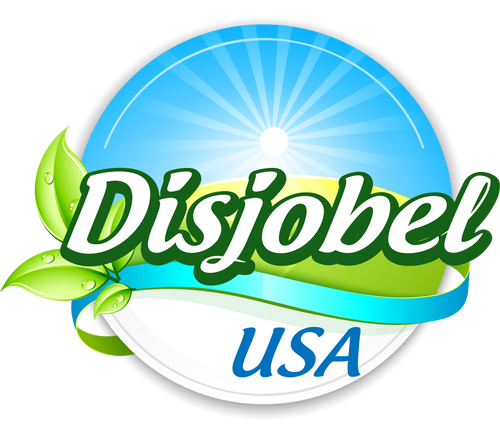Which ingredient gives some pastries their flaky texture? And which is responsible for fluffy, light cakes? The answer is vegetable shortening. We tell you all about what it is and how it contributes to baked goods.
What is vegetable shortening?
Shortening is any type of fat that is solid at room temperature, like butter and margarine. Some come from animal fat and some from vegetable fat. Today, the main sources of vegetable shortening are soybean, palm, and cottonseed (Jones, 2021).
But, how do vegetable oils, usually liquid at room temperature, become solid? Typically, through hydrogenation. The process fully saturates the oil molecules with hydrogen ions until they reach the signature firmness of saturated fats such as butter or coconut oil (Jones, 2021). However, some types of shortening are not hydrogenated, like palm shortening.
As a rule, shortening is odorless and flavorless and is 100% fat with no water content (Moncel, 2021).
Shortening varieties
There are four types of shortening (Moncel, 2021):
- Solid. It comes in a can or as baking sticks. It is best for making pastries, pie crusts, and bread.
- Liquid. It comes in boxes or jugs and works well when baking cakes.
- All-purpose shortening is meant mostly for professional use to produce bread, biscuits, cookies, pies, wafers, and pastries. It has no emulsifiers.
- Cake or icing shortening has added emulsifiers to help cakes retain more moisture.
Palm oil shortening
As mentioned, vegetable shortening comes from different plant oils. One of the most popular ones is palm oil, which is used profusely in the food industry, cosmetics, hygiene products, and cleaning products (Ethical Consumer, 2019).
Manufacturers also produce shortening from palm oil. The end result enhances the natural properties of palm oil (Bakening, n.d. The Paleo Mom, n.d.):
- It is especially shelf-stable.
- As a semi solid fat, it sports a luxurious, thick texture that translates into fluffier baked products. Furthermore, it adds to smoother frostings.
- With a 230°C smoke point, it holds up magnificently during baking and frying.
- It tends to pose fewer health risks than oil because it loses a portion of unsaturated fats during processing and does not carry any trans-fat, as it does not go through hydrogenation.
Now, let’s take a closer look at what plant shortening brings to baking.
Uses of vegetable shortening in baking
Flour, baking powder, eggs, and sugar are the main staple baking ingredients. However, some other components bring a special element to baked goods. This is the case of vegetable shortening, which helps create flaky end products (Jones, 2021).
How does it do it? By curbing gluten’s stretchiness. Gluten strands in wheat flour stretch and form a matrix during baking, which translates into a chewy texture. But when shortening is added to the flour before baking, it coats these strands and prevents them from lengthening and creating a tough matrix. Consequently, the product sports a crumbly, flaky texture (Jones, 2021).
Such a texture also comes from the fact that the shortening does not completely mix with dry ingredients. Therefore, there are streaks of solid fat throughout the dough that help create flakiness (Fincher, 2022).
Achieving either flakes or crumbs using shortening has to do with the size of the pieces cut into dry ingredients. For pie crusts or croissants, for instance, pea-sized chunks are best. More crumbly goods, like streusel, need smaller-sized pieces, similar to coarse sand (Moncel, 2021).
Other benefits of using vegetable shortening
Furthermore, this type of fat keeps cookies from spreading excessively as they bake. It also helps baked goods to remain soft, as it reverts to a semisolid state upon cooling. This is why goods baked with it are less crispy than those made with butter (Fine Cooking, n.d. Moncel, 2021).
Additionally, it usually produces more stable icings and frostings because it helps them better withstand heat (Fine Cooking, n.d. Moncel, 2021).
Moreover, it also serves as a frying medium. People use it instead of cooking oils or other types of fat because it has a high smoke point. This trait allows food to be cooked quickly at elevated temperatures without burning the shortening and avoiding the risk of a burnt flavor. In addition, it offers fewer chances of spattering because it does not contain water (Jones, 2021. Moncel, 2021).
Similarly, it works for greasing pans (Fincher, 2022).
As you can see, vegetable shortening is key to achieving specific textures in baked goods. It gives a higher control of structure and consistency than other types of fat, so it is the ideal ingredient to create delicate end products.
References
Bakening. (n.d.). Palm shortening. Retrieved from https://bakening.co/pages/ingredient-sustainable-organic-palm-shortening
Ethical Consumer. (2019). Palm Oil — What is it used for? Retrieved from https://www.ethicalconsumer.org/food-drink/palm-oil-what-it-used
Fincher, M. (2022). What is Vegetable Shortening? All Recipes. https://www.allrecipes.com/article/what-is-vegetable-shortening/
Fine Cooking. (n.d.). Vegetable Shortening. https://www.finecooking.com/ingredient/vegetable-shortening
Jones, T. (2021). The Pros and Cons of Shortening. Healthline. https://www.healthline.com/nutrition/shortening
Moncel, B. (2021). What Is Shortening? The Spruce Eats. https://www.thespruceeats.com/what-is-shortening-1328458#:~:text=There%20are%20four%20types%20of,and%20cake%20or%20icing%20shortening
The Paleo Mom. (n.d.). Palm Shortening. Retrieved from https://www.thepaleomom.com/wiki/palm-shortening/




















